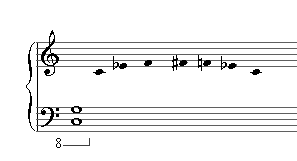Improvising the blues on the piano is a lot easier than you might think. It’s a great way for beginners to sound very cool, without having to be as good as Oscar Peterson.
In this lesson we’ll introduce some neat blues ideas to get you started.
Assumed knowledge:
A basic idea of where the notes names are on the piano.
Some ability to read music, at least in the treble clef.
So let’s get going!
Learn the blues scale and you’re half way to playing the blues. We’re going to introduce the first four notes of it now, played in the right hand. Use the fingering as shown:


The first stage is to improvise around these notes. If you’re not familiar with improvising don’t panic! It’s really not such a big deal. Try following these two rules for now :
You can change direction whenever you like, and repeat notes as often as you like – but do not skip a note. For example, if you’re on Eb, you can play F or C, or repeat Eb again. But you can’t jump to F#.
Try to vary the speed and the changes of direction. Make what you play unpredictable.
Once you’ve practised the right hand by itself a bit, add a C and a G in the left hand as shown:

Try playing the left hand notes, then a long phrase using the four right hand notes. Once the left hand has faded away, play it again and start a new phrase in the right hand.
This lesson was written by David Bruce on 8notes.com (http://www.8notes.com/school/lessons/piano/beginner_blues/). For the full lesson, and for more lesson like this, be sure to check out the 8notes.com website
To keep up to date with whats happening in the music industry, be sure to join our {mailing list}








